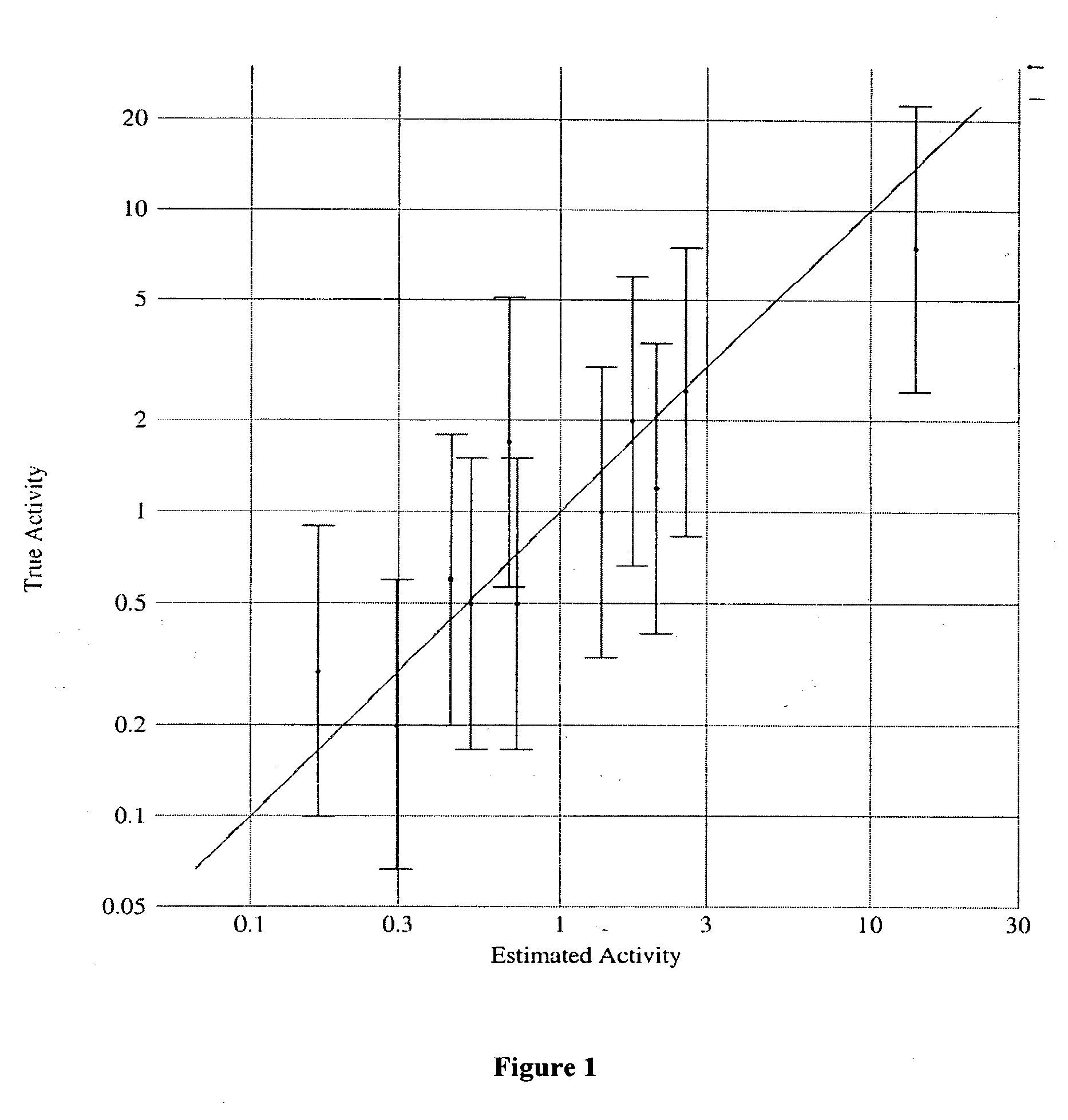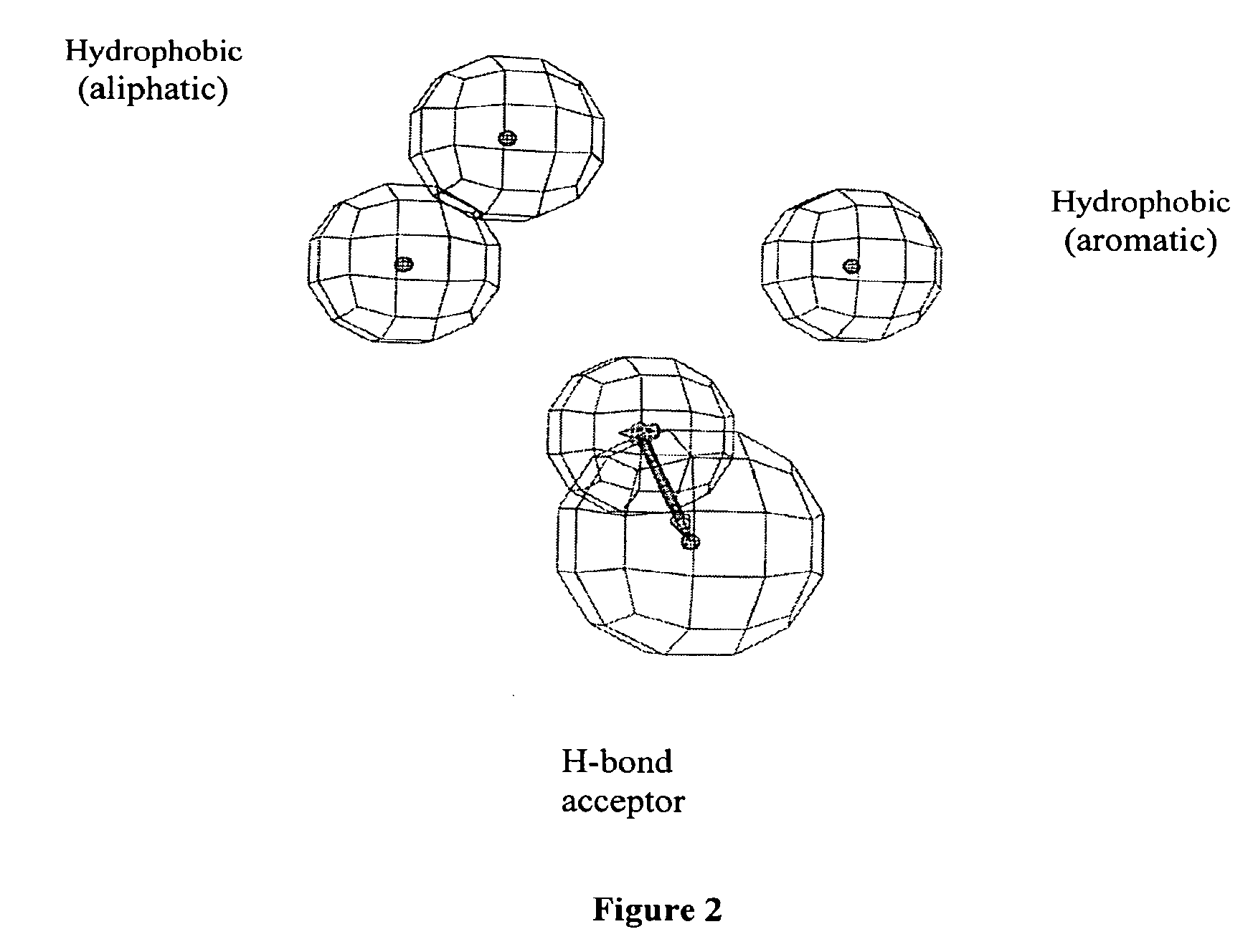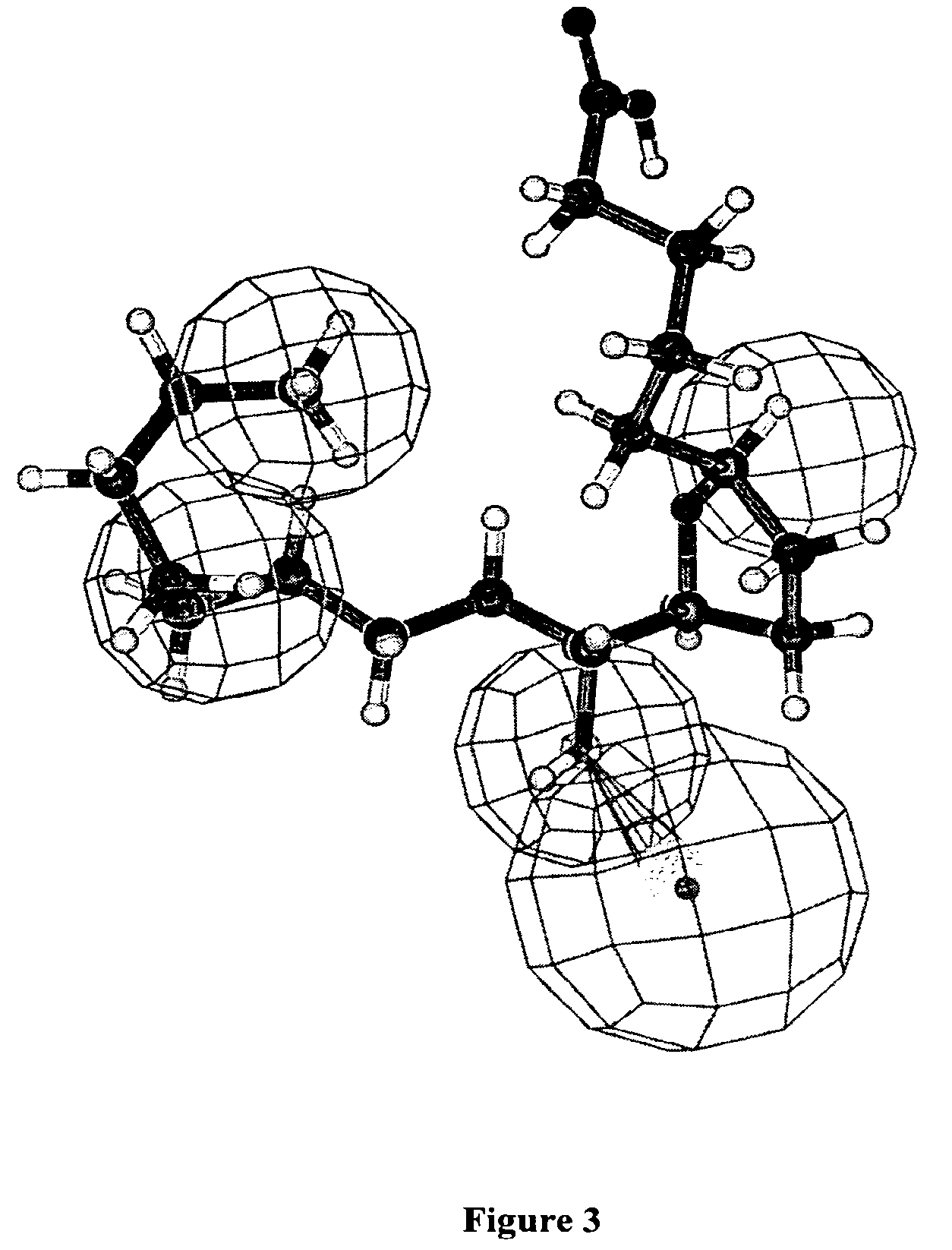Arthropod Repellent Pharmacophore Models, Compounds Identified as Fitting the Pharmacophore Models, and Methods of Making and Using Thereof
a technology of arthropods and pharmacophores, applied in the field of pharmacophores, can solve the problems of entomophobia, allergic reactions, dermatitis, dermatitis, etc., and achieve the effects of toxic effects in some people, reducing the risk of allergic reactions, and reducing the effect of entomophobia
- Summary
- Abstract
- Description
- Claims
- Application Information
AI Technical Summary
Problems solved by technology
Method used
Image
Examples
example 1
Repellent Activity Assays
[0131]The following assays may be used to assay compounds according to the present invention for repellent activity. As provided herein, test arthropod colonies such as the 16 being reared at WRAIR, AFRIMS, NAMRU-3 and NAMRU-2 which include nine mosquitoes (Aedes aegypti, Aedes albipictus, Aedes taeniorhynchus, Anopheles albimanus, Anopheles stephensi, Anopheles dirus, Anopheles farauti, Anopheles barbirostris, Culex pipiens), three sand flies (Phlebotamous papatasi, P. bergeroti or P. kazeruni), two ticks (Hyloma spp. and Argus spp.), and flea and chigger species may be used.
[0132]All of the above arthropod colonies are reared and maintained or a new colony will be initiated in numbers to satisfy the demand for testing and evaluation. During this study an attempt will be made to set up a flea and a chigger colony so as to be able to test the spectrum of activity of new repellents or repellent formulations as scheduled to achieve the goals of the repellent d...
example 2
3D-QSAR & Pharmacophore Generation
[0154]The molecular modeling software, CATALYST®4.7 software (Accelrys Inc., San Diego, Calif.) was used to construct a three-dimensional QSAR pharmacophore model for the repellent activities exhibited by known repellent compounds. A training set of 11 compounds provided in Table 1 having a broad range of repellent activities was used to construct the pharmacophore model.
[0155]The pharmacophore model was developed by placing suitable constraints on the number of available features such as, aromatic hydrophobic or aliphatic hydrophobic interactions, hydrogen bond donors, hydrogen bond acceptors, hydrogen bond acceptors (lipid), and ring aromatic sites to describe the repellent activity of the repellent compounds.
[0156]During this pharmacophore or hypothesis generation, the molecules were mapped to the features with their pre-determined conformations generated earlier using the “fast fit” techniques in the CATALYST®. The procedure resulted in the gene...
example 3
Cross Validation of Pharmacophore Model
[0157]The pharmacophore model may be cross-validated by generating a test set of different repellent compounds known in the art. The test set compounds may be screened for repellent activity in a manner identical to the compounds of the original training set according to Example 1 or methods known in the art. The compounds of the test set for cross validation should not be ones of the original training set used for automatic generation of the pharmacophore.
[0158]Regression analysis is performed by mapping this test set onto the features of the pharmacophore and should show remarkable consistency of the model (R greater than about 0.85, preferably greater than about 0.90, more preferably greater than about 0.95). Regression information is used to estimate activity of the training set of the compounds as well as to estimate the unknown compounds. The greater the fit of the pharmacophore with the compound, the more likely the compound will exhibit...
PUM
 Login to view more
Login to view more Abstract
Description
Claims
Application Information
 Login to view more
Login to view more - R&D Engineer
- R&D Manager
- IP Professional
- Industry Leading Data Capabilities
- Powerful AI technology
- Patent DNA Extraction
Browse by: Latest US Patents, China's latest patents, Technical Efficacy Thesaurus, Application Domain, Technology Topic.
© 2024 PatSnap. All rights reserved.Legal|Privacy policy|Modern Slavery Act Transparency Statement|Sitemap



